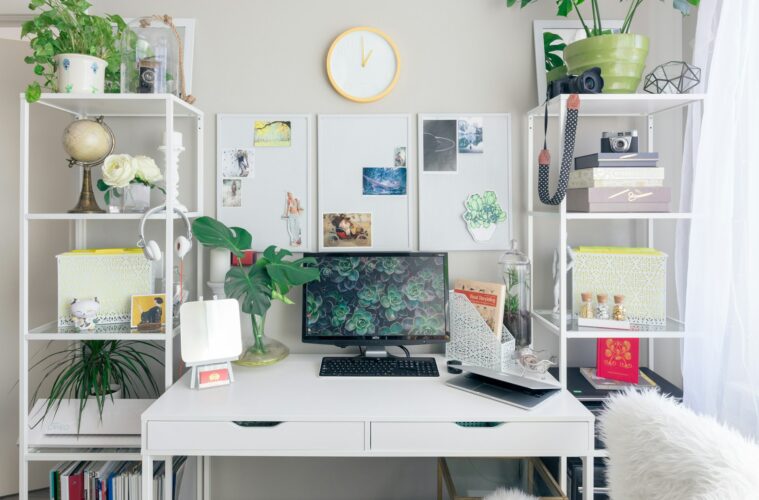In the modern world, where space is often at a premium, creating a conducive study environment within the confines of a small room can be a challenging yet rewarding endeavour. Whether you’re a student, a remote worker, or an avid learner, the setting in which you study profoundly impacts your focus, productivity, and overall learning experience. With thoughtful planning and strategic design, you can transform even the tiniest of spaces into a sanctuary of concentration and inspiration. In this article, we’ll explore a comprehensive guide on how to craft the perfect study environment in a small room.
Transforming a Small Room into the Perfect Learning Space
1. Maximise Space Efficiency
Embrace minimalism by decluttering your study area. Remove unnecessary items and keep only the essentials on your desk and shelves. Opt for space-saving furniture like a foldable desk or a wall-mounted workstation to free up valuable floor space.
2. Lighting Matters
Proper lighting is essential for maintaining focus and preventing eye strain. Position your desk near a window to maximise natural light during the day. Invest in a high-quality desk lamp or overhead lighting to illuminate your workspace effectively, especially during evening study sessions.
3. Comfort is Key
Select ergonomic furniture that prioritises comfort and supports good posture. Invest in a comfortable chair with proper lumbar support to prevent back pain and fatigue during long study sessions. Additionally, consider adding a cushion or seat pad for extra comfort.
4. Soundproofing and Noise Control
Minimise distractions by soundproofing your study space or using noise-canceling headphones to block out unwanted noise. If soundproofing isn’t feasible, consider playing soft instrumental music or white noise to create a conducive auditory environment for studying.
5. Organisational Solutions
Utilise vertical space by installing shelves or wall-mounted storage units to keep textbooks, stationery, and study materials neatly organised and within reach. Invest in desk organisers, file holders, and drawer dividers to maximise storage efficiency and maintain a clutter-free workspace.
6. Personalisation and Inspiration
Surround yourself with motivational quotes, inspirational artwork, or photos that resonate with you and ignite your passion for learning. Personalise your study space to reflect your interests and goals, but avoid overdecorating to prevent distractions.
7. Establish a Study Routine
Develop a consistent study routine and designate specific times for studying each day. Stick to your schedule to cultivate discipline and train your mind to focus during dedicated study periods. Incorporate short breaks into your routine to rest and recharge between study sessions.
8. Set Boundaries
Communicate with family members or roommates to establish boundaries and minimise interruptions during study time. Use visual cues like a “do not disturb” sign or noise-canceling headphones to signal your focus and discourage distractions.
9. Utilise Technology Wisely
Leverage technology to enhance your study experience, whether it’s using educational apps, digital flashcards, or online resources. However, be mindful of potential distractions from social media or unrelated websites by using website blockers or productivity apps to stay focused.
10. Prioritise Self-Care
Remember to prioritise self-care and well-being while studying in a small room. Take regular breaks, stay hydrated, and incorporate physical activity into your routine to maintain balance and prevent burnout.
In conclusion, creating the perfect learning space in a small room requires thoughtful planning, strategic design, and a commitment to optimising every aspect of your space for productivity and focus. By maximising space efficiency, prioritising comfort, minimising distractions, and personalising your study area, you can cultivate an environment that inspires learning, fosters concentration, and empowers you to achieve academic success.





